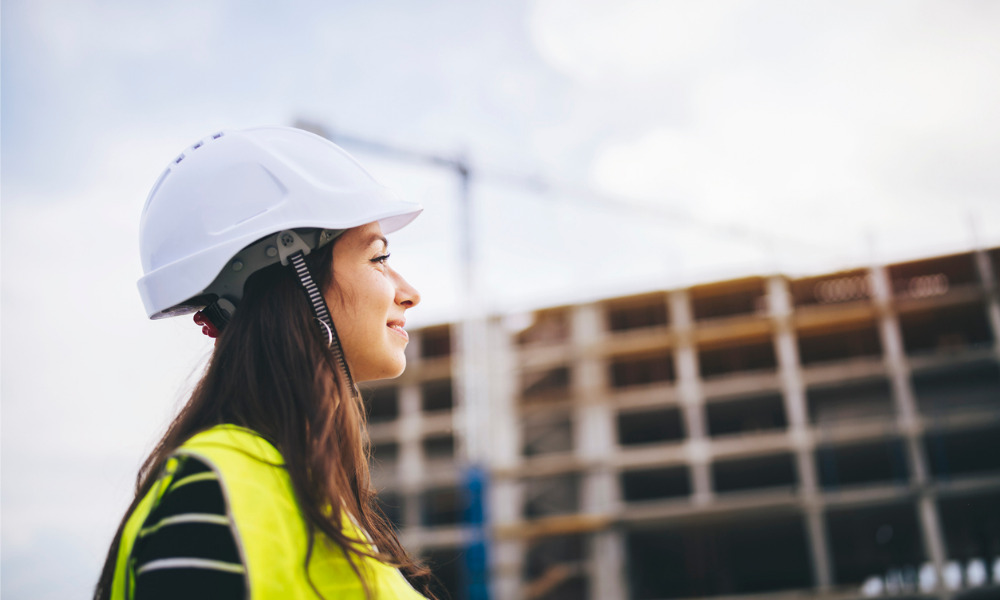
And it's HR who're leading the charge

Australia’s construction industry is booming – even in a pandemic – becoming the ninth fastest growing sector in the last five years. As house prices rise, so too does the demand for new property, bringing with it job opportunities and fertile ground for a fast-growing career.
But it’s not all good news because the flourishing sector doesn’t benefit everyone. Women have consistently made up just two percent of trade and semi-skilled workers in Australia’s construction industry over the past 30 years. In Australia’s most male-dominated sector, high levels of discrimination and harassment have turned women off entering the trade and as a result, the industry – and the country - is poorer for it.
HRD spoke to Kate Evans, group executive - people, brand and communications at construction company SHAPE Australia, who said historically, the industry hasn’t been inviting for women but that is starting to change.
“Ten years ago, people in senior leadership roles didn't actually understand what the implications of the gap meant and its limitations in that we were closing ourselves off from 50% of the talent pool,” she said. “So fundamentally, I think now people get it, and that's why change is happening and it will continue to get better."
While change is underfoot, it’s not happening on its own. It’s the result of a determined, intentional and hard-fought battle to change the mindset of leaders and drive home the commercial benefit of diversity. At SHAPE, Evans has spearheaded a cultural change within the organisation over the past decade and in 2017, the board voted to put improving company culture as the number one priority.
As the HR lead, she’s dealt with a fair few discrimination complaints in her time and said the vast majority are borne from ignorance, rather than deliberate malice. That’s why sustained education and awareness campaigns have been a useful tool in opening the eyes of leaders.
“When a lot of these sorts of issues were happening five years ago, we didn't know our own biases, and the impact they were having on people. The work that we've done around helping people to really understand their own biases and how that impacts their teams has been a huge shift for us,” she said.
“It’s been about giving our females more confidence to call these things out and, most importantly, for senior leaders in the industry to stamp it out straight away whenever they see it. I think if women can feel safe and that they don't have to be subjected to conversations or comments that they don't want to be then that’s one barrier removed.”
Read more: Mantel Group launches million-dollar training program for women in technology
The long work hours, combined with a lack of flexibility around parental leave and part-time work is another common barrier. But again, Evans said the attitude is changing and businesses know if they want to retain their top female talent, they simply have to step up. Looking ahead to the future, she hopes to see the industry press fast forward on the progress made in the last ten years.
“I know that can happen because of the adjustment in thinking and attitudes that I’ve personally seen during that time,” she said. “I remember doing some work around improving female participation 10 years ago and it just went nowhere, it was shut down at every level, including management, but that’s just not the case anymore.”
It's not the case because Evans has been able to prove the ROI on diversity, year after year. She took a data-led approach with the help of Organisational Culture Inventory (OCI) surveys which measure different leadership styles. The goal was to move the dial away from aggressive and passive leadership – which dominated SHAPE’s culture metrics in 2008 - to a more constructive style, embodying a humanistic, encouraging and affiliative approach.
Read more: Australian start-up Brighte introduces gender neutral parental leave policy
Evans said data has proven to be a powerful tool for HR leaders fighting for buy-in, especially those who feel like they’re pushing water uphill.
“To me, data is everything because it's the only evidence you can truly use with people whose opinions you just can't change through influence,” she said. “Get as much data as you can to help promote and tell that story for you, then it becomes about facts, not opinion.”
While it’s positive to see diversity in Australia’s construction industry improving, change must happen faster. This year, the WGEA reported that Australia’s gender pay gap had increased to 14.2%, meaning women are paid $261.50 less than men on average each week. While a number of metrics go into measuring the pay gap, the ABS pointed to the rise in construction wages – and the male-dominated nature of the industry – as contributing to the rise. If this trend continues, Australia’s gender pay gap will only get bigger.
HRD is shining a spotlight on Australia’s gender pay gap in this feature series. Is your organisation helping to close the gap? If so, we want to hear from you. Contact [email protected]